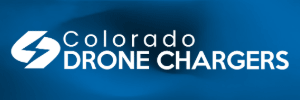It was posted on the DJI Forum that a daytime waiver has been granted. I quote:
"So, applied under my 107 certification for a waiver to fly at night for the fire department. Everything went through in less than 30 days... FAA actually pulled through on this one☺
Yes, the waiver comes with some stipulation... such as the use of a VO, and receiving/providing training to PIC and VO on the illusions of darkness. However, all of the stuff listed that must be followed is all legitimate in safely flying at night so no complaints here☺.
Im very excited. The process was 100% painless."
Part 107.29 prohibits night operations, yet appears to intend to have a different definition than 1.1.
Until recently the FAA has had three definitions of night.
1) Sunset to sunrise, which has to do with aircraft lighting
2) Night as defined in 1.1 "the time between the end of evening civil twilight and the beginning of morning civil twilight, as published in the Air Almanac, converted to local time."
3) 61.57(b) which states from "beginning 1 hour after sunset and ending 1 hour before sunrise". This is only used for manned aircraft for night currency.
Now, with Part 107.29 the FAA has created a fourth definition which is used for lights on UAS. It starts at sunset and end 30 minutes later and you must have lights that are visible for 3 miles and it once again starts 30 minutes before sunrise and end at sunrise.
They did not define night or daylight in 107.1 definitions so we are still forced to use the definition of night in 1.1 for 107.29(a) "as published in the Air Almanac". And we must use lights for 30 minutes after sunset.
What does this literally mean? I can operate my UAS under 107.29 from Sunset to end of civil twilight (1.1 definition, which is 25 minutes after sunset today for my location). While 107.29(b) only allows operation until end of civil twilight, as published in the Air Almanac, I am required to have lights until 30 minutes after sunset. There technically is a period of 5 minutes today after the end of civil twilight till 30 minutes after sunset where I would have to use lights, yet I am prohibited from operating in this five minute period by 107.29(a).
It would have made more sense to just say we must use lights from sunset to sunrise since they did not bother to change or create a new definition for night. Or they could have used the newly create 30 minute definition in 107.29(a).
Of course a recreational UAS operator has no night restrictions, other than any "community-based set of safety guidelines and within the programming of a nationwide community-based organization". If you are a certified remote pilot do not even think about operating at night (1.1 definition) without a waiver to 107.29, you would never be able to convince the FAA it is a recreational flight and you could loose your certificate. The irony is that loosing your remote pilot certificate could make the flight legal!
I have not see a night waiver yet, but I would not be surprised if it allowed you to turn your lights off 30 minutes after sunset since 107.29(b) only requires it for this thirty minute period.
Sorry for such a long explanation for night time operations, but it was not my job to write the regulations. My job is only to understand, follow and teach them.





